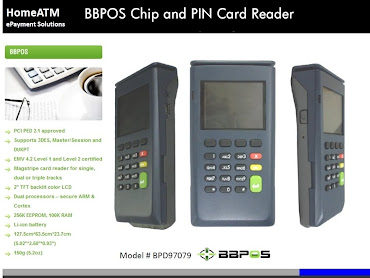The Holdup at Online Banks - WSJ.com
At a time of uncertainty in nearly every market, I'm a big fan of online savings accounts, many of which are paying 3% to 4% interest right now. But they have a frustrating quirk: Transferring money between a savings account at one bank and a checking account at another easily takes two days -- and sometimes as many as four.
This delay has become more apparent and more irritating during the continuing financial crisis, as consumers seek two basics: safety and yield. (Yields on these savings accounts have tended to be higher than those on money-market accounts.)
[ING Direct] PA Photos/Landov
Online accounts, like all bank accounts, are protected by the Federal Deposit Insurance Corp. up to $250,000 per account holder. Offerings from HSBC Holdings PLC's HSBC Direct, Emigrant Bank's EmigrantDirect and First National of Nebraska Inc.'s FNBO Direct typically have low minimum-balance requirements. They can be good places for holding your cash reserves or earning interest on money set aside for tax payments or tuition, especially since interest-bearing checking accounts and traditional bank savings accounts typically pay well below 1% interest.
But in a remarkably interconnected, instantaneous world, where a debit-card purchase shows up in our bank accounts right away, it's equally remarkable that online transfers can be so slow.
Here's the hitch: Funds transferred between two different banks or a bank and a brokerage firm aren't really sent "online" in the way we have come to expect. Instead, these large transfers move in steps. Banks have slowed down the process further to reduce the chance of fraud, even though such fraud is fairly rare. (Years ago, Congress forced banks to speed up the clearing of checks and the availability of deposits, but it hasn't addressed electronic payments.)
You may have seen this when you tried to move money to or from a brokerage account. I ran into it most recently when I went to my ING Direct savings account first thing on a Monday morning to transfer money for a new car to my Bank of America checking account. While it showed up as "pending" on Wednesday, it wasn't mine to spend until Thursday.
What happens during that time? ING sends transactions in batches during the day to an automated clearinghouse, which sorts them and moves them to the receiving bank in a matter of two to four hours, according to Arkadi Kuhlmann, chief executive officer of ING Direct USA, a unit of ING Groep NV, and Elliott C. McEntee, chief executive of Nacha, the Electronic Payments Association, a not-for-profit group that oversees the automated clearinghouses.
In many cases, the receiving bank gets the transfer the same day. Under rules established by Nacha, money that moves on Monday should be available by the end of Tuesday. If the transfer slips to early Tuesday morning, the money should be available first thing Wednesday morning.
[chart]
But the money isn't always available that quickly. Bank of America Corp. says such transfers typically take two to three days. EmigrantDirect says on its Web site that transfers take two to four days, while HSBC Direct says customers should expect transfers to take up to three days. The industry calls this a "three-day good funds model," says David Goeden, an HSBC executive vice president in personal financial services. That is, the bank wants to make sure our funds are good before it lets us have them.
The slowdown for deposits is even worse. I sign in to ING Direct to transfer funds for free to and from my Bank of America checking account. That's because Bank of America charges me $3 to transfer to another bank, which it says is typical in the industry. Because ING doesn't know if the transfer is good until the money is there, it holds deposits for five business days -- a whole week in civilian time -- before making them available, though they will start to earn interest sooner.
The banks say they want to avoid fraud, such as transfers from bad accounts, or when someone else gets hold of your online sign-on name and password and tries to move your money somewhere else. According to numbers compiled by the American Bankers Association, about $969 million was lost to fraud in 2006, the most recent year available, out of about $41.7 trillion in checking-related transactions, a number kept very low in part because of aggressive risk-management practices. But even when attempted fraud is factored in, more than 99.9% of checking transactions are good.
Here's what you can do if you want to transfer money between institutions:
- Plan ahead and send transfers early in the day to have a better chance of a faster transaction.
- Ironically, you can move your money faster with an old-fashioned paper check. See if your money-market account offers check-writing privileges, or open a small checking account at the same bank as your online account. Transfers within the same bank usually happen the same day.
- If the transactions take longer than two business days, complain to the bank where the transfer originated. Nacha doesn't regulate how long a bank can hold onto a deposit "pulled" from another bank to be sure the funds are there. But it does have rules, and can assess fines, if funds "pushed" from another bank aren't credited quickly.
- Hang on. Europe already has a much faster system, and systems to speed up the process here are under development, though they won't be ready for at least a couple of years.









0 comments